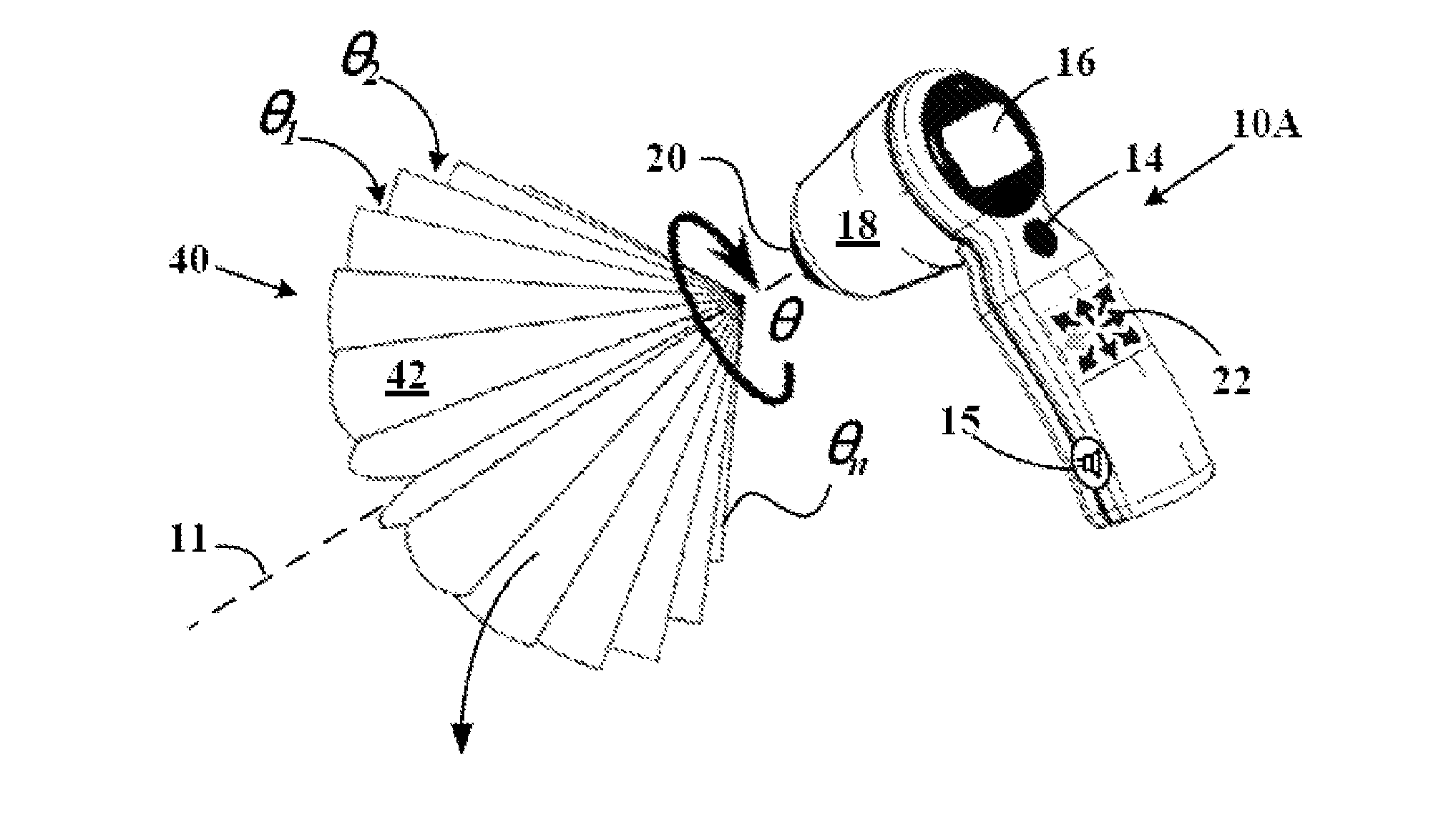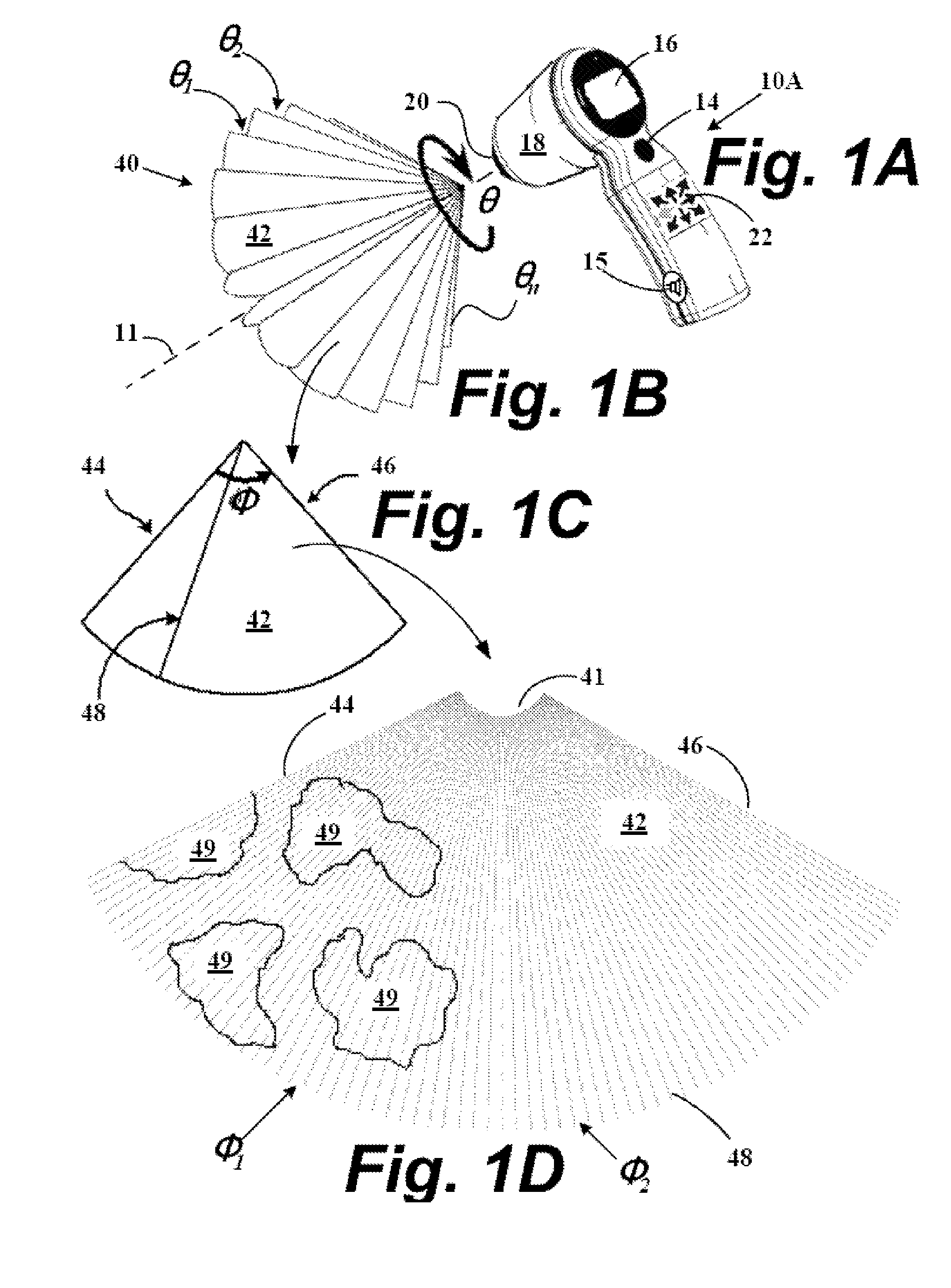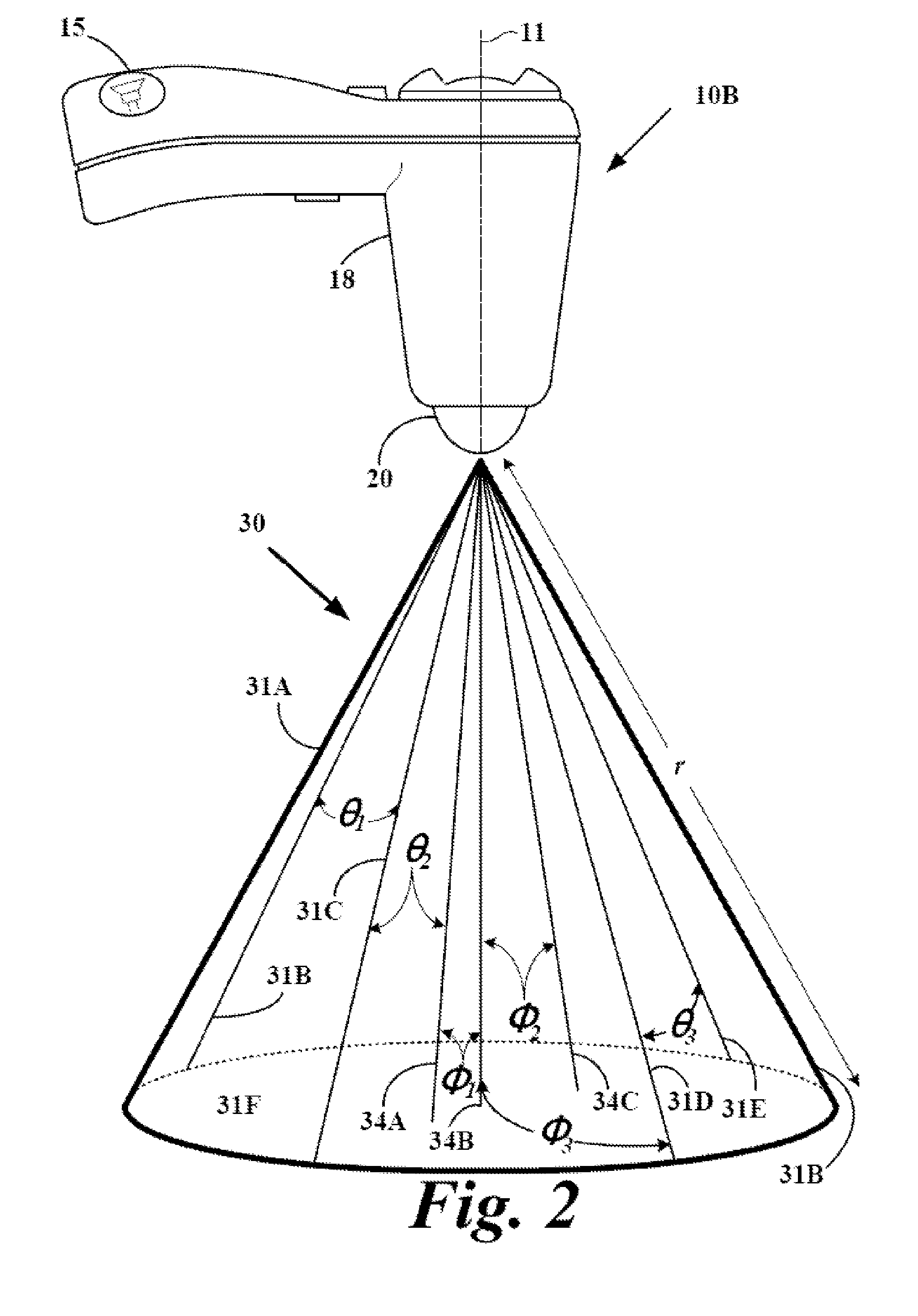Systems and methods to improve clarity in ultrasound images
a technology of ultrasound image and clarity, applied in image enhancement, instruments, applications, etc., can solve the problems of inability to achieve the effect of preserving shape and volume, improving ultrasound communication, and facilitating container refilling
- Summary
- Abstract
- Description
- Claims
- Application Information
AI Technical Summary
Benefits of technology
Problems solved by technology
Method used
Image
Examples
Embodiment Construction
[0023]Systems, methods, and devices for image clarity of ultrasound-based images are described. Such systems, methods, and devices include improved transducer aiming and utilizing time-domain deconvolution processes upon the non-stationary effects of ultrasound signals. The processes deconvolution applies algorithms to improve the clarity or resolution of ultrasonic images by suppressed reverberation of ultrasound echoes. The initially acquired and distorted ultrasound image is reconstructed to a clearer image by countering the effect of distortion operators. An improved point spread function (PSF) of the imaging system is applied, utilizing a deconvolution algorithm, to improve the image resolution, and remove reverberations by modeling them as noise.
[0024]As regards improved transducer aiming particular embodiments employ novel applications of computer vision techniques to perform real time analysis. First, a computer vision method is introduced: optical flow, which is a powerful ...
PUM
 Login to View More
Login to View More Abstract
Description
Claims
Application Information
 Login to View More
Login to View More - R&D
- Intellectual Property
- Life Sciences
- Materials
- Tech Scout
- Unparalleled Data Quality
- Higher Quality Content
- 60% Fewer Hallucinations
Browse by: Latest US Patents, China's latest patents, Technical Efficacy Thesaurus, Application Domain, Technology Topic, Popular Technical Reports.
© 2025 PatSnap. All rights reserved.Legal|Privacy policy|Modern Slavery Act Transparency Statement|Sitemap|About US| Contact US: help@patsnap.com



